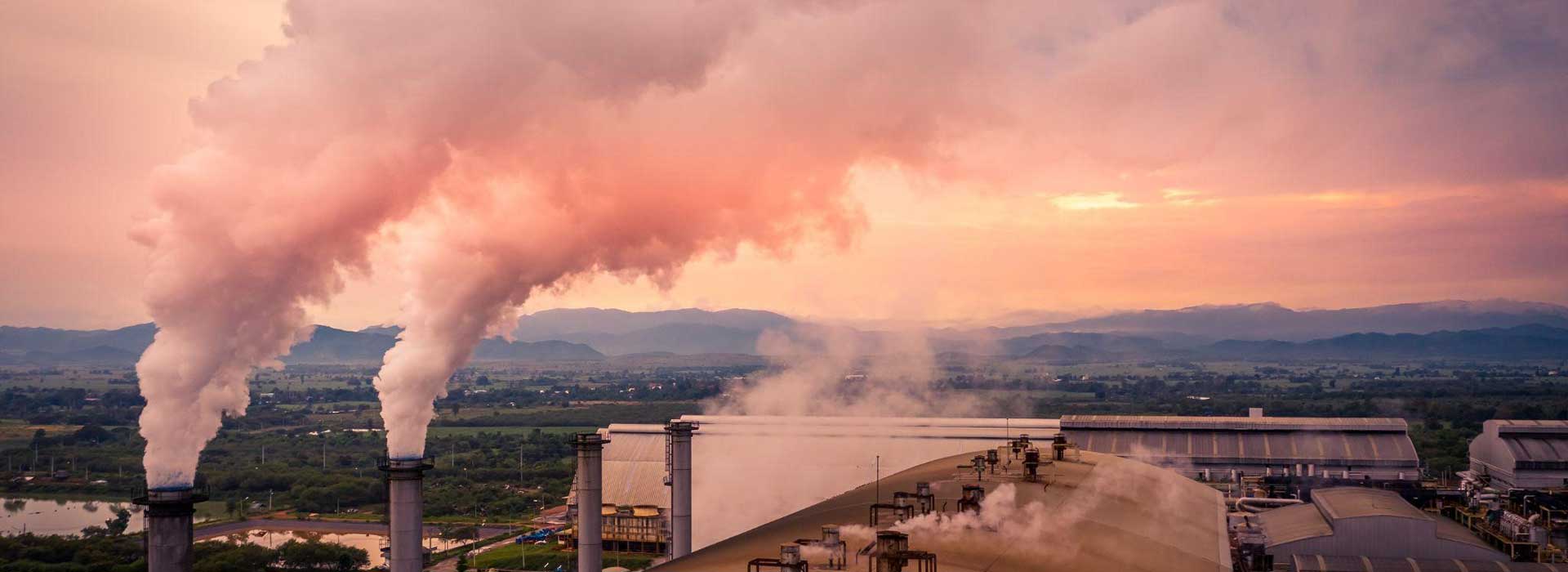Table Of Content

The greenhouse effect is the process through which heat is trapped near Earth's surface by substances known as 'greenhouse gases.' Imagine these gases as a cozy blanket enveloping our planet, helping to maintain a warmer temperature than it would have otherwise. Greenhouse gases consist of carbon dioxide, methane, ozone, nitrous oxide, chlorofluorocarbons, and water vapor. Water vapor, which reacts to temperature changes, is referred to as a 'feedback', because it amplifies the effect of forces that initially caused the warming. People add methane to the atmosphere through livestock farming, landfills, and fossil fuel production such as coal mining and natural gas processing.
The Greenhouse Effect and our Planet
Fluorinated gases – such as hydrofluorocarbons, perfluorocarbons and sulfur hexafluoride – are GHGs that do not occur naturally. Hydrofluorocarbons are refrigerants used as alternatives to chlorofluorocarbons (CFCs), which, having depleted the ozone layer,were phased out thanks to the Montreal Protocol. This temperature increase has long-term, adverse effects on the climate, and affects a myriad of natural systems. Effects include increases in the frequency and intensity of extreme weather events – including flooding, droughts, wildfires and hurricanes – that affect millions of people and cause trillions in economic losses.
International report confirms record-high greenhouse gases, global sea levels in 2022 - National Oceanic and Atmospheric Administration
International report confirms record-high greenhouse gases, global sea levels in 2022.
Posted: Wed, 06 Sep 2023 07:00:00 GMT [source]
Increasing Greenhouses Gases Are Warming the Planet
And while emissions from electricity production rose in 2021, they are still down more than 40% since 2000 and 12% since 2016. While pollution plummeted after stay-at-home orders were issued during the pandemic in 2020, the state’s carbon emissions increased by 3.4% the following year, according to the analysis. Although the state has pledged to slash planet-warming emissions by 40% of 1990 levels by 2030, the state is not on track to meet that commitment, according to an analysis by the nonprofit group Next 10 and Beacon Economics, an L.A.-based consulting firm.
Airborne fraction
TSI incorporates the 11-year solar cycle and solar flares/storms from the Sun's surface. The data produced by third parties and made available by Our World in Data is subject to the license terms from the original third-party authors. We will always indicate the original source of the data in our documentation, so you should always check the license of any such third-party data before use and redistribution. All visualizations, data, and code produced by Our World in Data are completely open access under the Creative Commons BY license. You have the permission to use, distribute, and reproduce these in any medium, provided the source and authors are credited.
Greenhouse Gases and Sources
The exchange of incoming and outgoing radiation that warms the Earth is often referred to as the greenhouse effect because an agricultural greenhouse works in much the same way. Incoming shortwave UV radiation easily passes through the glass walls of a greenhouse and is absorbed by the plants and hard surfaces inside. Weaker, longwave IR radiation, however, has difficulty passing through the glass walls and is thereby trapped inside, warming the greenhouse.
Editorial: California can’t let big polluters win by undermining climate change disclosure laws
In general, fluorinated gases are the most potent and longest lasting type of greenhouse gases emitted by human activities. Radiative forcing caused by carbon dioxide varies in an approximately logarithmic fashion with the concentration of that gas in the atmosphere. The logarithmic relationship predicts that the surface warming potential will rise by roughly the same amount for each doubling of CO2 concentration. At current rates of fossil-fuel use, a doubling of CO2concentrations over preindustrial levels is expected to take place by the middle of the 21st century (when CO2 concentrations are projected to reach 560 ppm). A doubling of CO2 concentrations would represent an increase of roughly 4 watts per square metre of radiative forcing.
Methane
Water vapour is the most potent greenhouse gas in Earth’s atmosphere, but its behaviour is fundamentally different from that of the other greenhouse gases. The primary role of water vapour is not as a direct agent of radiative forcing but rather as a climate feedback—that is, as a response within the climate system that influences the system’s continued activity. This distinction arises because the amount of water vapour in the atmosphere cannot, in general, be directly modified by human behaviour but is instead set by air temperatures. The warmer the surface, the greater the evaporation rate of water from the surface.
Biden-Harris Administration releases Greenhouse Gas Monitoring Strategy - National Oceanic and Atmospheric Administration
Biden-Harris Administration releases Greenhouse Gas Monitoring Strategy.
Posted: Wed, 29 Nov 2023 08:00:00 GMT [source]
Electricity is used by other end-use sectors—in homes, businesses, and factories—and the greenhouse gas emissions from electricity generation can be allocated to the sectors that use the electricity. Looking at greenhouse gas emissions by end-use sector can help us understand energy demand across sectors and changes in energy use over time. As we have seen, a country’s greenhouse gas emissions are often tied to its level of industrialization. So it is also helpful to look at what kinds of industries produce the most greenhouse gases. About half the light energy reaching Earth's atmosphere passes through the air and clouds to the surface, where it is absorbed and radiated in the form of infrared heat. About 90% of this heat is then absorbed by greenhouse gases and re-radiated, slowing heat loss to space.
Each signatory to the treaty agreed to set their own voluntary greenhouse gas emission limits and to make them stricter over time. Climate scientists said that the emissions limits committed under the agreement wouldn't keep warming as low as 1.5 or even 2 degrees C, but that it would be an improvement over the "business-as-usual" scenario. In 2022, direct greenhouse gas emissions from the agriculture sector accounted for 9.4% of total U.S. greenhouse gas emissions.
Although they are present in the atmosphere in very small concentrations, they trap heat very effectively, making them high "global warming potential" (GWP) gases. The Residential and Commercial sectors include all homes and commercial businesses (excluding agricultural and industrial activities). Direct emissions are produced by burning fuel for power or heat, through chemical reactions, and from leaks from industrial processes or equipment. When emissions from electric power generation are allocated to the industrial end-use sector, industrial activities account for a much larger share of U.S. greenhouse gas emissions. The transportation sector currently has a relatively low percentage of electricity use and thus indirect emissions, but it is growing due to the use of electric and plug-in vehicles. To convert non-CO2 gases into their carbon dioxide-equivalents we multiply their mass (e.g. kilograms of methane emitted) by their ‘global warming potential’ (GWP).
Some scientists worry that continued global warming will push the creatures to extinction by changing their habitat and food supply. Many human societies depend on predictable rain patterns in order to grow specific crops for food, clothing, and trade. If the climate of an area changes, the people who live there may no longer be able to grow the crops they depend on for survival. Some scientists also worry that tropical diseases will expand their ranges into what are now more temperate regions if the temperatures of those areas increase. Rising sea levels cause flooding in coastal cities, which could displace millions of people in low-lying areas such as Bangladesh, the U.S. state of Florida, and the Netherlands.
In 2021 and 2022, the increase in total greenhouse gas emissions was driven largely by an increase in CO2 emissions from fossil fuel combustion due to the continued rebound in economic activity after the height of the COVID-19 pandemic. In 2022, CO2 emissions from fossil fuel combustion increased by 8% relative to 2020 and 1% relative to 2021. The increase in natural gas consumption and emissions in 2022 is observed across all sectors except for U.S.
The report said that based on the most recent data available from the state, emissions have fallen just 11.5% below those of 1990. Or take a deep dive into our Zeroing in on Emissions report, which highlights ten ways to help Canada zero out emissions by 2050. Because more energy enters than exits the planet, surface temperatures increase until a new balance is achieved. Greenhouse Gas Emissions and Sinks report and explore gridded methane inventory data. This is typically shorter than CO2 (which can persist for centuries or even thousands of years), but longer than methane (which has an average lifetime of 12 years).
In discussions on climate change, we tend to focus on carbon dioxide (CO2) — the most dominant greenhouse gas produced by the burning of fossil fuels, industrial production, and land use change. Some greenhouse gases, such as methane, are produced through agricultural practices, in the form of livestock manure, for example. Others, like CO2, largely result from natural processes like respiration, and from the burning of fossil fuels like coal, oil and gas.
To find out more about the sources of N2O and its role in warming the atmosphere, visit the Climate Change Indicators page. Capturing landfill CH4 for destruction in a flare or conversion to renewable energy are both effective emission reduction strategies. Learn more about these opportunities and the EPA's Landfill Methane Outreach Program.
Atmospheric levels of carbon dioxide—the most dangerous and prevalent greenhouse gas—are at the highest levels ever recorded. Greenhouse gas levels are so high primarily because humans have released them into the air by burning fossil fuels. The gases absorb solar energy and keep heat close to Earth's surface, rather than letting it escape into space. The main human activity that emits CO2 is the combustion of fossil fuels (coal, natural gas, and oil) for energy and transportation.




















